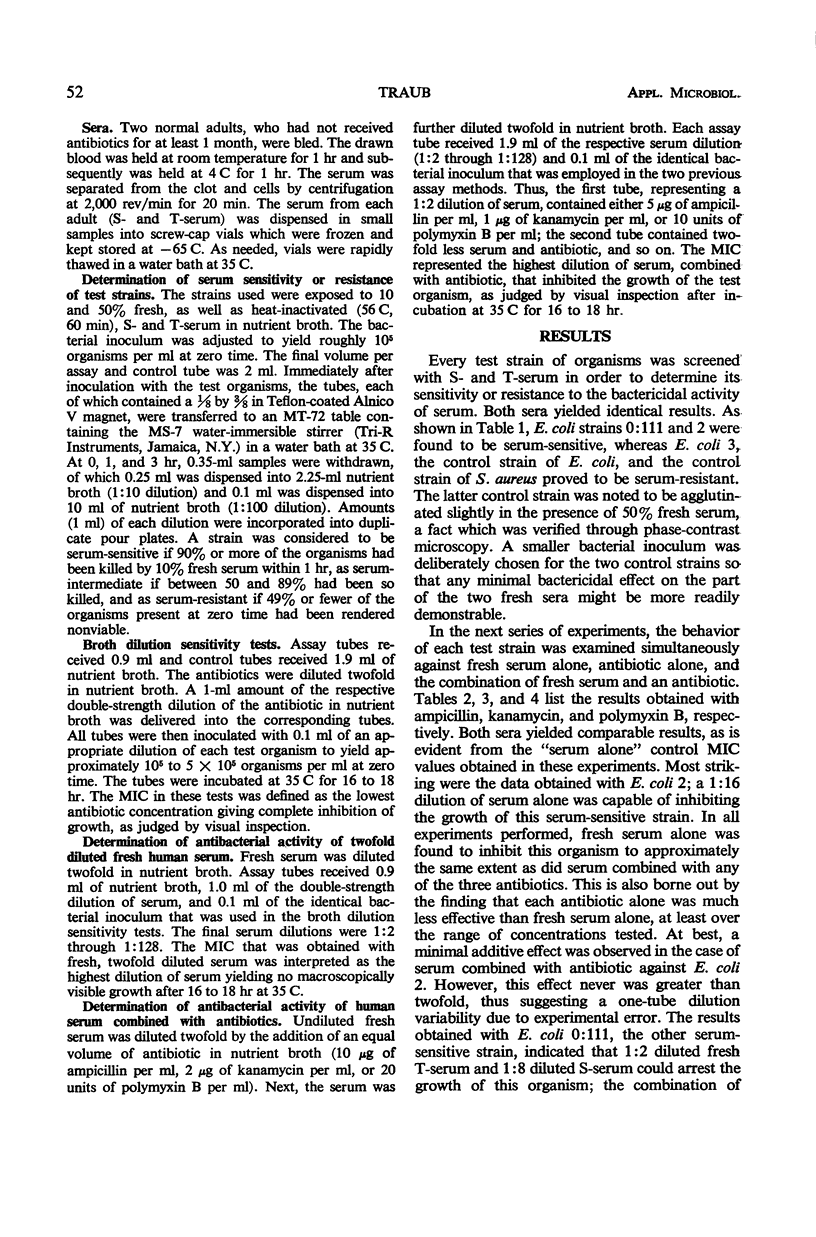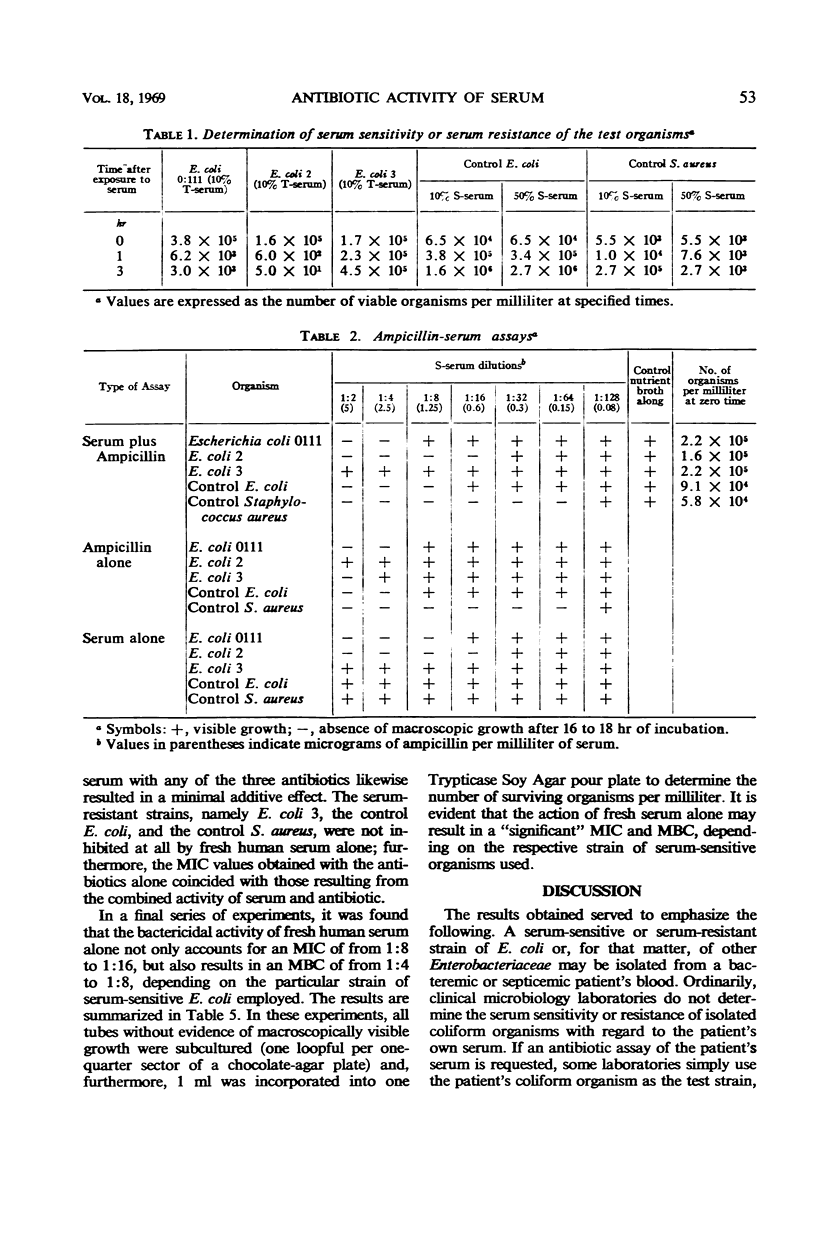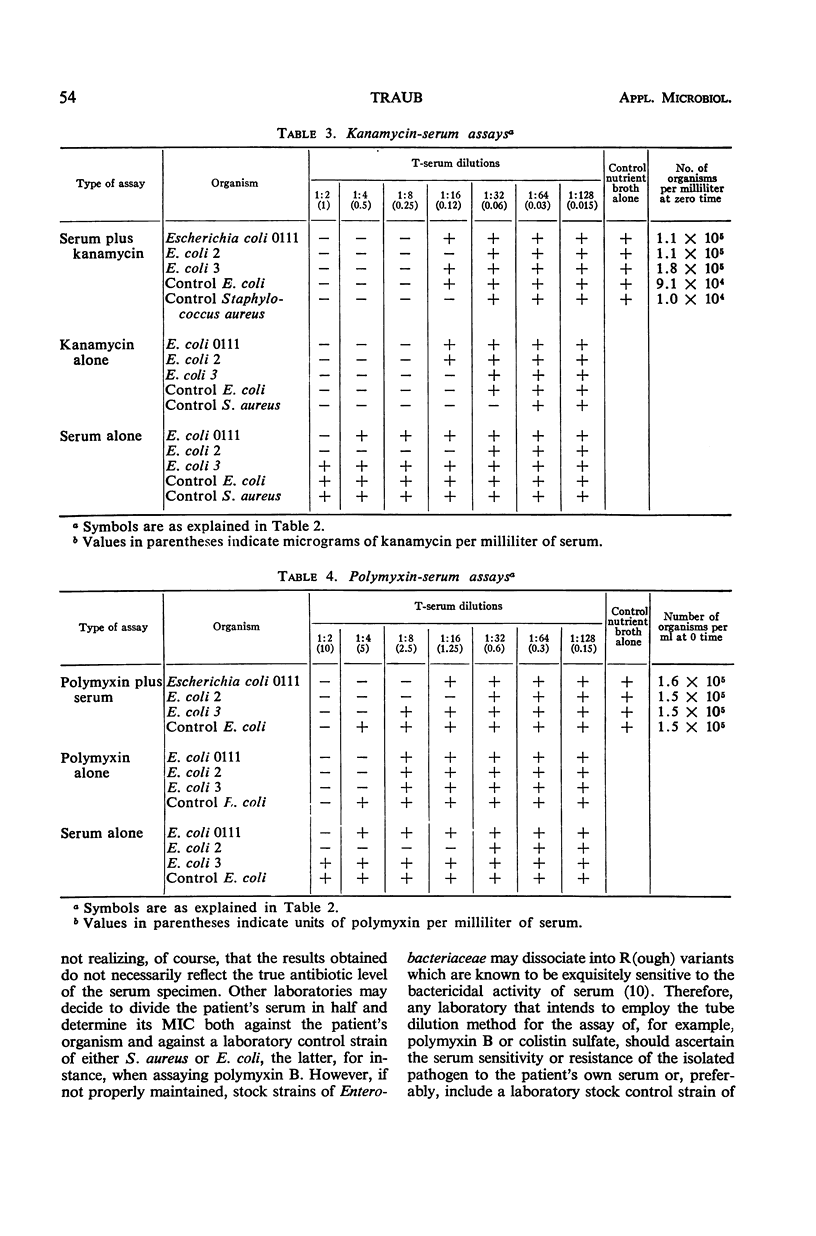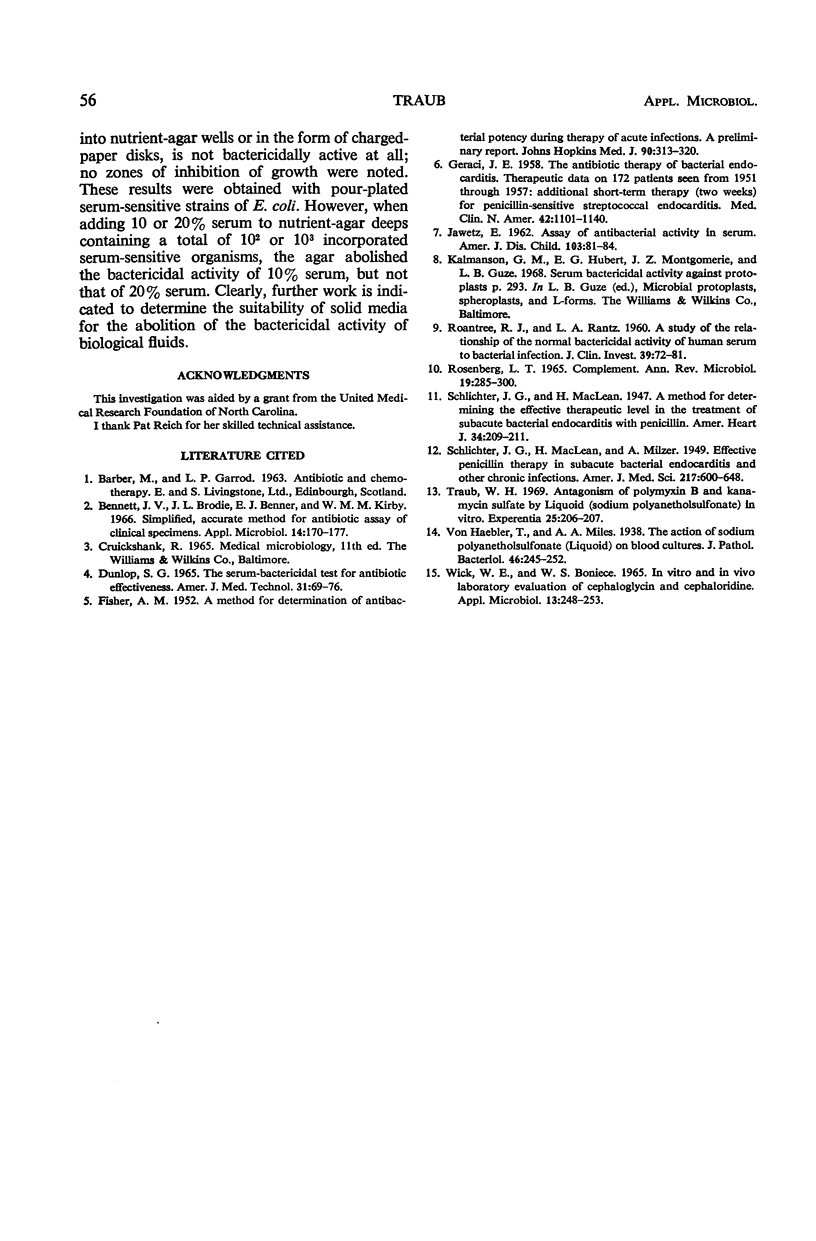Abstract
One of the drawbacks of the “tube dilution” method for the assay of antibiotics in human serum has been illustrated by utilizing serum-sensitive and serum-resistant strains of Escherichia coli. In the case of serum-sensitive strains, it was found that fresh serum alone may account for the same degree of inhibition and thus yield minimal inhibitory concentrations identical to those obtained with serum combined with antibiotics, that is, “simulated” serum assay specimens. This fallacy of the method is discussed with regard to those instances in which laboratories were merely to utilize the patient's own coliform organism as the test organism, or with respect to the assay of, for example, polymyxins, in which inadvertently a R(ough) and therefore, serum-sensitive strain of E. coli were to be used as the indicator organism. It is recommended that serum-resistant laboratory strains of Staphylococcus aureus or E. coli of known antibiotic susceptibility be employed as the test organisms proper in order to circumvent the inherent bactericidal activity of serum.
Full text
PDF





Selected References
These references are in PubMed. This may not be the complete list of references from this article.
- Bennett J. V., Brodie J. L., Benner E. J., Kirby W. M. Simplified, accurate method for antibiotic assay of clinical specimens. Appl Microbiol. 1966 Mar;14(2):170–177. doi: 10.1128/am.14.2.170-177.1966. [DOI] [PMC free article] [PubMed] [Google Scholar]
- DUNLOP S. G. THE SERUM-DILUTION BACTERICIDAL TEST FOR ANTIBIOTIC EFFECTIVENESS. Am J Med Technol. 1965 Jan-Feb;31:69–76. [PubMed] [Google Scholar]
- GERACI J. E. The antibiotic therapy of bacterial endocarditis: therapeutic data on 172 patients seen from 1951 through 1957: additional observations on short-term therapy (two weeks) for penicillin-sensitivie streptococcal endocarditis. Med Clin North Am. 1958 Jul;42(4):1101–1140. doi: 10.1016/s0025-7125(16)34262-6. [DOI] [PubMed] [Google Scholar]
- JAWETZ E. Assay of antibacterial activity in serum. A useful guide for complex antimicrobial therapy. Am J Dis Child. 1962 Jan;103:81–84. doi: 10.1001/archpedi.1962.02080020085014. [DOI] [PubMed] [Google Scholar]
- Roantree R. J., Rantz L. A. A STUDY OF THE RELATIONSHIP OF THE NORMAL BACTERICIDAL ACTIVITY OF HUMAN SERUM TO BACTERIAL INFECTION. J Clin Invest. 1960 Jan;39(1):72–81. doi: 10.1172/JCI104029. [DOI] [PMC free article] [PubMed] [Google Scholar]
- Rosenberg L. T. "Complement". Annu Rev Microbiol. 1965;19:285–300. doi: 10.1146/annurev.mi.19.100165.001441. [DOI] [PubMed] [Google Scholar]
- Traub W. H. Antagonism of polymyxin B and kanamycin sulfate by Liquoid (sodium polyanetholsulfonate) in vitro. Experientia. 1969 Feb 15;25(2):206–207. doi: 10.1007/BF01899127. [DOI] [PubMed] [Google Scholar]
- WICK W. E., BONIECE W. S. IN VITRO AND IN VIVO LABORATORY EVALUATION OF CEPHALOGLYCIN AND CEPHALORIDINE. Appl Microbiol. 1965 Mar;13:248–253. doi: 10.1128/am.13.2.248-253.1965. [DOI] [PMC free article] [PubMed] [Google Scholar]


